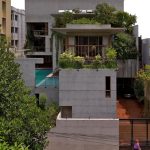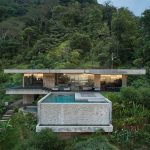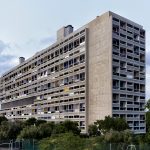As its name signifies, Eco-Brutalism is Brutalist architecture that combines greenery with raw concrete facades. It indicates that nature can never be replaced and can always be placed beautifully in any kind of surroundings. ‘Brutalism’ comes from the French word ‘beton brut’ which means raw concrete. The word ‘brutal’ also signifies the lack of feeling in the building. It is just steel and reinforced concrete standing straight and firmly. It provides the juxtaposition between the very modern, bold concrete columns and beams and the very soft aspect of nature. It provides a juxtaposition of colors also. The greyish-white color acts as a background for the green foreground. Brutalism is one of the prominent architectural styles since the early 20th century. However, with a growing awareness of the environment, Eco-Brutalism is an emerging choice among people. It is not only limited to industrial and institutional buildings, but residences, libraries, offices, and resorts are also being designed in this style. Eco-brutalism combines urban sophistication with nature. Some examples of this style are Tiing Boutique Resort in Bali, Indonesia; Mamun Residence in Chittagong, Bangladesh; Jungle House in Guaruja, Sao Paulo; Art Villa in Costa Rica, etc.

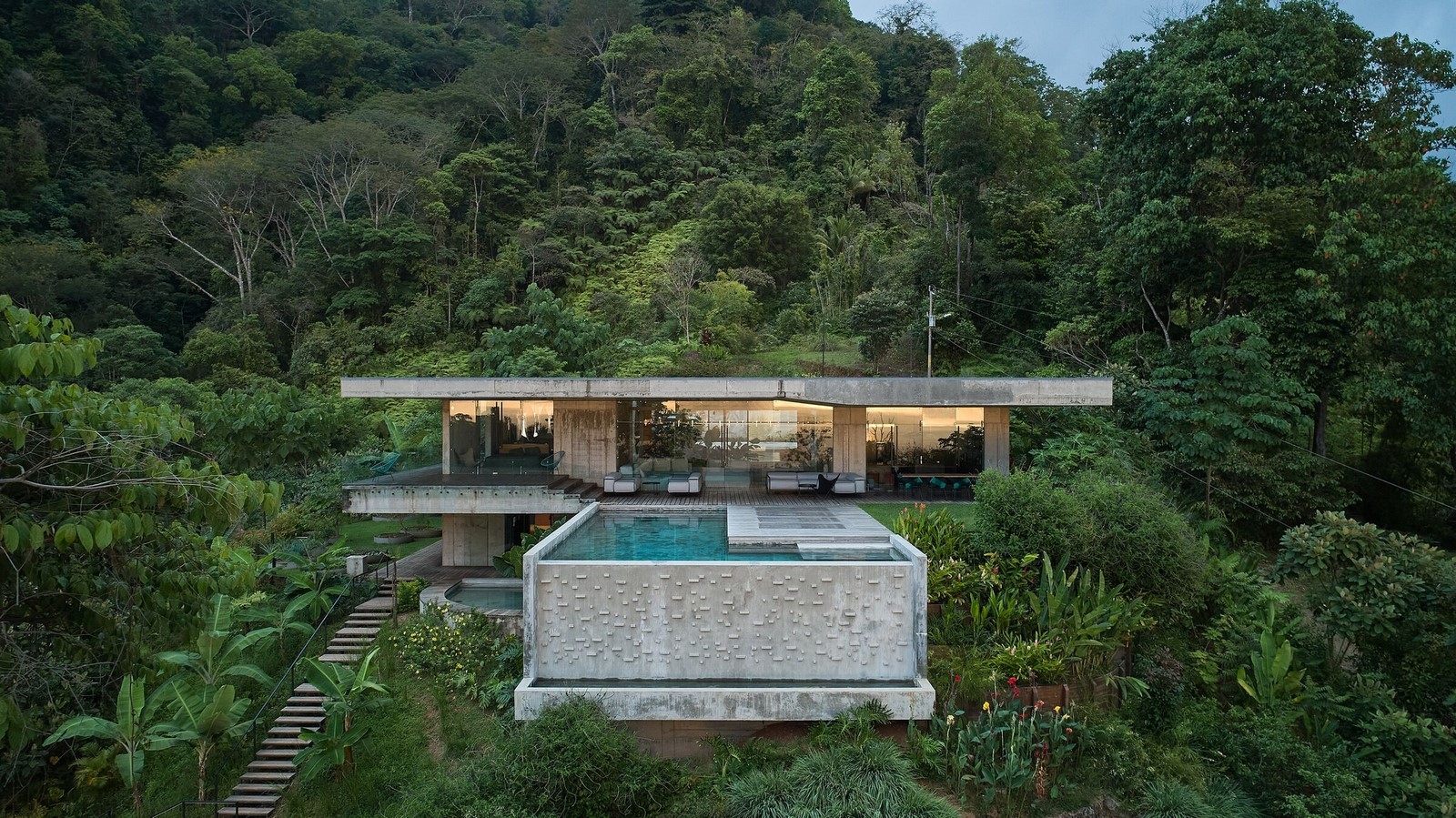
History
Le Corbusier, Unite d’ Habitation
The base of Brutalist architecture was laid by French architect Le Corbusier when he designed a residential apartment ‘Unite d’ Habitation.’ In this residential apartment, which was completed in 1952, he used wooden panels with exposed concrete texture. However, he did not coin the term Brutalism. Brutalism became popular as after the war, urban centers were to be rebuilt, and it was easy and cheap to construct brutalist buildings. Later, many British architects practiced new brutalism. American architects also practiced the same in the late 20th century and the style was also popular in the Soviet Union. But by the 1970s people lost interest in it, and the brutal architecture became a foregone term. But it could not be demolished as there were too many brutal buildings and there would have been a lot of pollution and waste of materials to do so. As a result, a form of architecture with some sustainable and green features was born. And this is how Brutalist architecture has a soft-green touch. In modern times, Eco-Brutalist architecture is quite popular in countries like Indonesia, Brazil, etc.
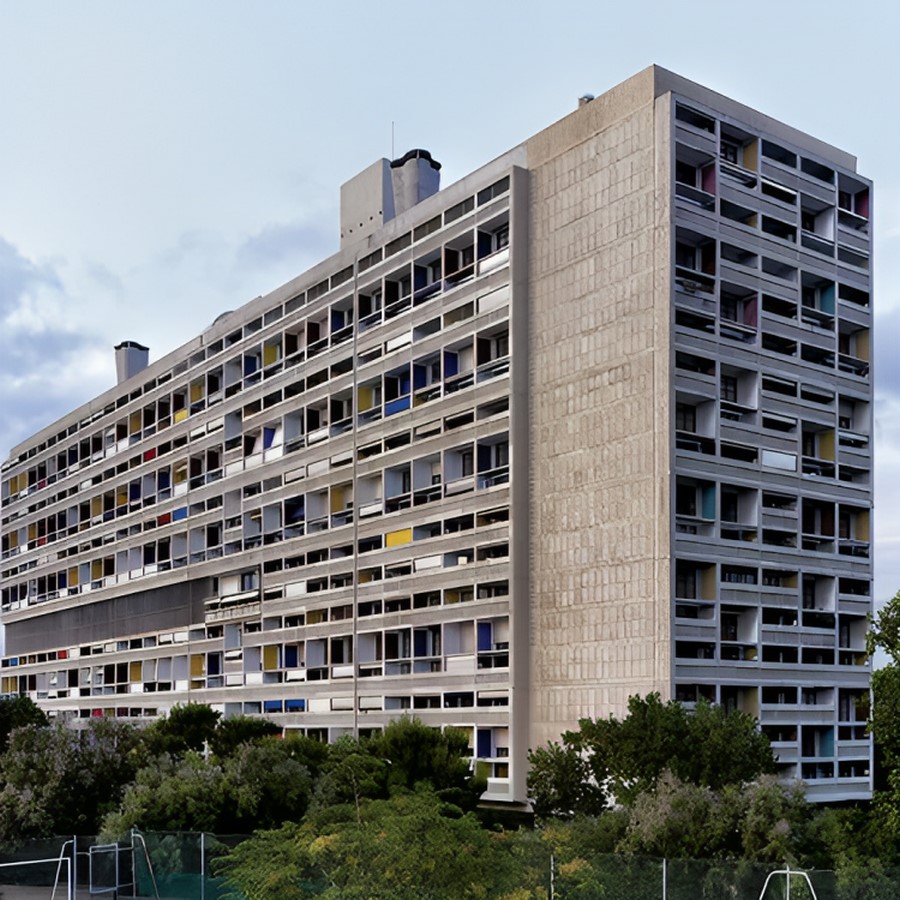
Pros and Cons
Green Elements, Carbon footprint
The good thing about the Eco-Brutalist architecture is that it brings nature with itself. Green elements such as green roofs, vertical vegetation, rainwater collectors, etc. are some important elements of it. This style is greener and brighter than the previous Brutalist style. It can be an answer to an already built building in which a green landscape has to be incorporated. The amount of mini landscape that is put in different pockets allows fresh air in every corner of the building. Not only the building but imagine a whole lot of scattered buildings with these mini green pockets. They would help their immediate atmosphere also to have less contamination of pollutants. These buildings are strong, demand less maintenance, and can be built anywhere.
However, the very base of this style, which is concrete, is not sustainable at all. The manufacturing of concrete has a large carbon footprint. Once concrete completes its life, it just becomes waste. In view of many, a plant and concrete do not go hand in hand. Either the concrete surface would not let the plant grow properly or the plant will lower the strength of the structure. Also, If a site is chosen in which the building is surrounded by a thick cover of trees and plants is not incorporated within the building, then concrete would not be compatible with its surroundings.

Eco-brutalism shows that no matter how urbanized the society becomes, a touch of flora always adds charm to the place. Wherever there is greenery, the place by itself becomes appealing. It might help to develop sensitivity towards nature, as now the occupant of the building would be taking care of the flora inside and around the building. He would be able to see the life cycle of flora from too close.
This style is a good approach to make a building eco-friendly that cannot be razed down. But it can be analyzed that if a sustainable and green building is to be built from scratch, then why start with concrete in the first place? Landscaping can be done in any type of building. It is better to use nature-friendly materials. The style is aesthetically beautiful, but it might have a wrong interpretation of popularizing concrete instead of its sustainability feature. In the case of high-rise eco-brutalist buildings, trees can add a lot of dead load to the building. It would be better to make a building whose structure is sustainable and let the trees be in their natural habitat on the earth’s crust.
References:
Krosofsky, A. (2021). Eco Brutalism: Why Is the Architectural Style So Controversial? [online] Green Matters. Available at: https://www.greenmatters.com/p/eco-brutalism
trvst (2022). What is Eco Brutalism, and is it Eco-Friendly? [online] TRVST. Available at: https://www.trvst.world/responsible-business/eco-brutalism/ [Accessed 28 Oct. 2023]
Archeetect (2023). Eco Brutalist Architecture: Green Meets Concrete. [online] Archeetect. Available at: https://archeetect.com/eco-brutalist-architecture/



